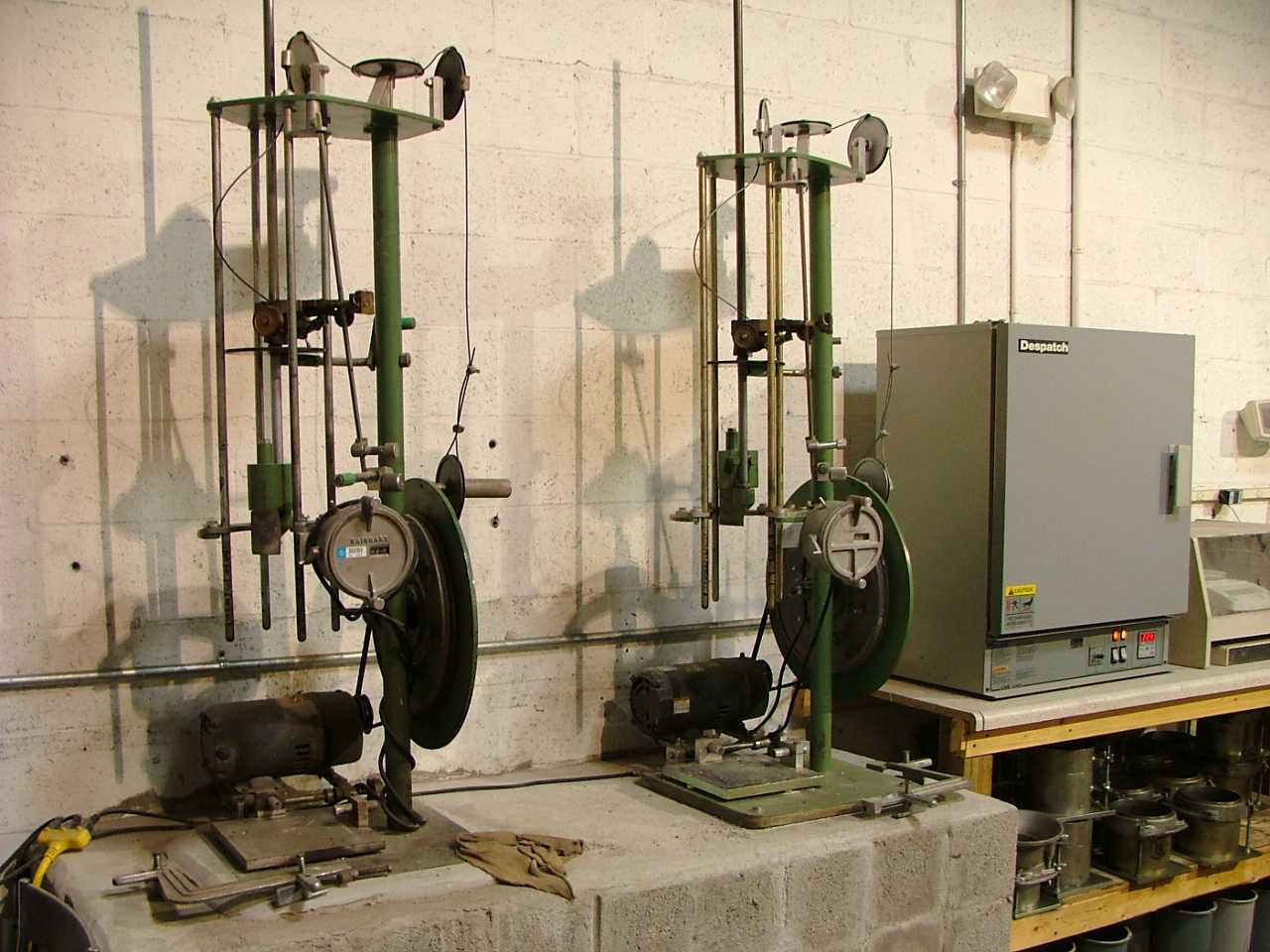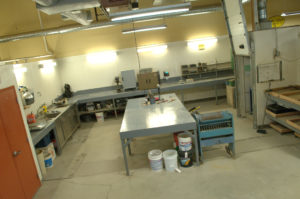Browse with Self-confidence: Material Testing Lab Solutions for Reliable Results
Wiki Article
Advancements in Material Screening for Unprecedented Performance
In today's quickly advancing globe, where technical innovations are improving industries and pushing the limits of what was as soon as deemed difficult, the demand for products that can endure unmatched conditions and deliver exceptional performance has become significantly critical. As scientists and engineers make every effort to establish next-generation products, the ability to precisely examine and evaluate their residential properties has never been more important. This brings us to the interesting realm of advancements in material testing, where advanced techniques and ingenious strategies are revolutionizing the way we comprehend and enhance product efficiency. From non-destructive testing techniques to the assimilation of expert system, the possibilities seem unlimited. Let us embark on this journey of expedition, as we uncover the amazing developments in material testing and their potential to form the future of various industries.Non-Destructive Examining Techniques
Non-destructive testing methods are important for reviewing the honesty and reliability of materials without causing any damages. These strategies play an essential duty in numerous markets, including aerospace, automobile, construction, and production. By utilizing non-destructive testing methods, engineers can analyze the homes and qualities of products, making certain that they meet the needed requirements and specifications.
An additional widely utilized method is magnetic fragment screening (MT), which is primarily utilized for identifying surface and near-surface problems in ferromagnetic materials. By using an electromagnetic field to the product and afterwards introducing magnetic particles, any type of issues present can be easily determined. MT is specifically effective for spotting fractures, absence of fusion, and other surface area abnormalities.
Advanced Products Characterization Methods
Advanced materials characterization techniques are crucial tools for assessing the residential or commercial properties and efficiency of materials in numerous industries. These techniques include the usage of innovative strategies to understand the microstructure and evaluate, structure, and habits of materials at the molecular and atomic degrees. By using advanced characterization researchers, approaches and designers can acquire important understandings right into the structural integrity, mechanical homes, thermal security, and chemical reactivity of products.One extensively used approach is scanning electron microscopy (SEM), which gives high-resolution photos of a product's surface. Another vital strategy is X-ray diffraction (XRD), which gives information about the crystal framework and stage structure of materials.
Additionally, transmission electron microscopy (TEM) makes it possible for scientists to observe the interior framework of products with atomic resolution. TEM is capable of disclosing details such as grain misplacements, borders, and problems, giving important information about a product's mechanical homes - material testing lab. In addition, spectroscopic methods like Fourier-transform infrared spectroscopy (FTIR) and Raman spectroscopy can be used to examine the chemical make-up, molecular structure, and vibrational modes of materials
High-Temperature and Extreme Atmosphere Testing
In order to examine the efficiency of products in high-temperature and extreme environments, extensive testing techniques are needed. These screening approaches are made to simulate the conditions that materials may come across in real-life applications, such as aerospace, vehicle, and power sectors. High-temperature and extreme environment screening intends to assess the behavior of materials under extreme warm, stress, and various other tough problems.One commonly utilized method for high-temperature screening is thermal analysis. This technique includes subjecting the product to differing temperatures while determining its thermal residential or commercial properties, such as thermal development, heat capacity, and thermal conductivity. By evaluating these homes, scientists can figure out exactly how the product will behave under different temperature level conditions, enabling them to select the most appropriate products for particular see here applications.
Another crucial facet of high-temperature and extreme setting screening is mechanical screening. This involves subjecting the product to mechanical anxiety at elevated temperatures, mimicing the problems it may experience in real-world applications. Mechanical testing aids examine the material's ductility, resistance, and toughness to deformation and failure under high-temperature and extreme conditions.
In addition, environmental testing is essential to analyze the product's performance in harsh conditions, such as corrosive atmospheres or direct exposure to extreme climate condition. This testing includes subjecting the material to numerous ecological variables, such as humidity, salt spray, and UV radiation, to review its resilience and resistance to deterioration and degradation.

Simulation and Modeling for Material Efficiency
Simulation and modeling play an important function in understanding and forecasting the efficiency of materials in numerous applications. With developments in computational capacities, designers and scientists can now imitate and model the habits of products under various conditions, providing beneficial insights right into their efficiency and aiding in the advancement of brand-new materials with improved residential properties.With simulation and modeling, researchers can examine the macroscopic and tiny habits of materials, including their mechanical, thermal, and electric residential or commercial properties. This allows them to anticipate how products will certainly behave under various tons, temperature levels, and environmental conditions, without the requirement for pricey and taxing experimental testing.
Simulation and modeling methods additionally make it possible for scientists to maximize product layouts and identify prospective weaknesses next or failure points. By examining the product's action to various pressures and stimuli, designers can make enlightened choices regarding product choice and style adjustments to enhance performance and durability.
Additionally, simulation and modeling can help in the development of materials for specific applications. For example, in the aerospace industry, scientists can imitate the habits of products under extreme temperatures and pressures to create light-weight yet solid materials for aircraft structures (material testing lab). In the clinical area, simulation techniques can be used to research the communications between materials and organic tissues, resulting in the development of biocompatible products for implants or medication delivery systems
Assimilation of Expert System in Product Screening
The consolidation of Artificial Intelligence (AI) right into product testing has actually reinvented the field, allowing researchers to achieve extraordinary accuracy and performance in reviewing material efficiency. AI algorithms can refine and examine large quantities of data, recognizing patterns and connections that may not be instantly noticeable to human researchers. This enables more specific and extensive screening, resulting in a much deeper understanding of material behavior.One application of AI in product testing remains in the advancement of predictive designs. By training AI formulas on huge datasets of material homes and performance, researchers can create designs that can precisely predict the behavior of brand-new materials under various problems. This can considerably quicken the product growth check here process, as it permits researchers to display and focus on products with wanted properties.
In enhancement to predictive modeling, AI can additionally be used to enhance screening procedures. By assessing historical screening data, AI algorithms can recognize the most insightful and efficient tests to carry out, lowering the time and resources needed for product assessment.
Moreover, AI can aid in the identification of anomalies or problems in products. By contrasting test results against anticipated end results, AI algorithms can discover inconsistencies and sharp researchers to prospective problems. This can aid boost quality assurance processes and make sure the usage of products that fulfill the required specs.
Final Thought

By analyzing these residential or commercial properties, researchers can determine just how the material will behave under various temperature level problems, enabling them to select the most suitable materials for details applications.
The unification of Artificial Knowledge (AI) into product screening has transformed the field, making it possible for scientists to attain unprecedented accuracy and performance in reviewing material performance.In verdict, innovations in product testing techniques, characterization approaches, high-temperature and severe environment testing, and the assimilation of man-made intelligence have greatly added to the advancement of unprecedented efficiency in materials. These innovations have permitted for the identification of product residential or commercial properties and actions, allowing the design and optimization of products for various applications. material testing lab. With more research and technical developments, product testing will continue to play an important duty in pressing the boundaries of product performance
Report this wiki page